Understanding your competitor’s backlink strategy is akin to deciphering a secret code – it grants access to valuable insights that can propel your own website’s SEO success. This guide equips you with the tools and knowledge to crack that code, revealing the backlinks that fuel your competitor’s online presence.
The Key to Link Domination: Why This Matters
Backlinks are the digital currency of SEO. The more high-quality backlinks a website possesses, the higher it ranks in search results. By analyzing your competitor’s backlink profile, you can discover the strategies they’re using to acquire these links. This knowledge empowers you to replicate their winning tactics and build a robust backlink profile of your own.
Gearing Up for the Mission: What You’ll Need
To embark on this backlink expedition, you’ll ideally need an Ahrefs account. However, fear not, SEO buccaneers on a budget – alternative routes are charted within this guide. In addition to your chosen backlink analysis tool, a trusty Google Sheet will be your companion for organizing the unearthed treasure.
Goal: To have a crystal clear overview of your competitor’s backlink authority and strategy.
Ideal Outcome: You have a document that not only summarizes your competitor’s backlink standing and strategy but also lists and classifies all their links.
Prerequisites or requirements: You will need access to an ahrefs account. (Ahrefs offers a $7-day trial here)
Why this is important: Knowing your competitors will let you know how much work you have ahead of you, as well as which strategies work best for them and that you might be able to replicate.
Where this is done: In Ahrefs and Google Sheets.
When this is done: As soon as you start working on a website’s SEO, and then periodically every 3 months.
Who does this: The person responsible for SEO.
-
Included Resource
SOP Library’s Competitor Backlink Strategy Template
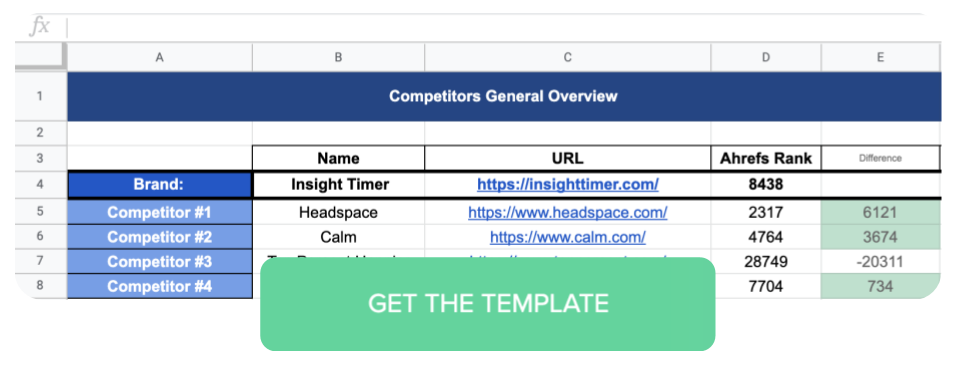
-
Identify your competitors
- Select which option applies to you (and click on it to jump to the right section):
- (option 1) If you’re looking for competitors for specific keywords, your best bet is to simply Google your keyword using incognito mode and see which websites come up in the organic results.
Important: Make sure your IP address matches the market your website is competing in (for example, if you’re going after the US market, make sure you’re browsing using a US VPN).
You can use this website to check your IP address. If necessary, use a VPN to change your IP address.
Example:

- Go through the list of organic results on the first page and select the competitors that are only a little bit larger than your business or smaller and add them to the Competitor Backlink Strategy Template.
- Example: Do not pick a competitor like Wikipedia, Coca-Cola, or the kind. Those brands will likely have resources and assets that you will not be able to replicate. Considering the direct competitors might not be useful if you aim to overdo/replicate their success (unless the brand you are working on is actually of such size)

- (option 2) If you’re looking for overall competitors across all keywords:
- Open ahrefs and query your own domain:

- Click ‘Organic Search’ and then select the country where you want to compete:

- Your Top 10 competitor list will show up bellow:

- Go through the list of organic results on the first page select the competitors that are only a little bit larger than your business or smaller and add them to the Competitor Backlink Strategy Template.
- Example: Do not pick a competitor like Wikipedia, Coca-Cola, or the kind. Those
- brands will likely have resources and assets that you will not be able to replicate so considering them direct competitors might not be useful if you aim to overdo/replicate their success. (unless the brand you are working on is actually of such size)

- Duplicate the Competitor sheet as many times as you need until you have a sheet for each competitor and rename it as such:

-
Analyze your competitors’ link profile
Note: You will be performing this for each competitor that you have on your list.
- Query your competitor’s domain in Ahrefs.

- On the top, you’ll find your competitor’s main backlink metrics: ‘

- Ahrefs Rank – If you sort all the websites in the world by the strength of their backlink profiles, you get the Ahrefs Rank (AR). Lower is stronger.
- DR – Domain Rating (DR) shows the strength of a target website’s backlink profile on a logarithmic scale from 0 to 100, with the latter being the strongest. It’s essentially a less granular version of Ahrefs Rank (AR).
- UR – URL Rating (UR) shows the strength of a target page’s backlink profile on a logarithmic scale from 0 to 100, with the latter being the strongest.
- Backlinks – The total number of links from other websites pointing to your target.
- Referring domains – The total number of unique domains linking to your target.
(Source for descriptions: Ahrefs)
- Add those metrics to the Competitor Backlink Strategy Template:

- Scroll down to analyze the timeline of links acquired.
- What to look for: Specific periods when your competitor might have acquired a lot of links. This may signal a specific strategy that was used that worked very well. (and you might want to replicate)
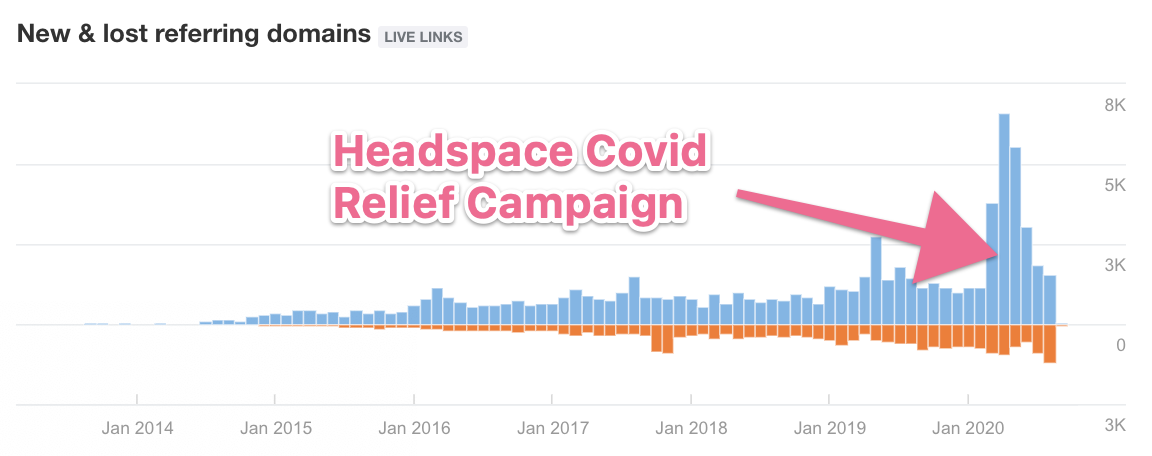
- Add any findings to your comments on the spreadsheet.
- On the Ahrefs report, scroll down to the CTLDs Distribution Map to visualize where links are coming from.
- What to look for: Typically, your links will be coming from countries where the brand has some kind of audience. If a brand is global, global links are expected. If it’s local, links from that specific country are to be expected.
- Example: If a website is targeting a Spanish audience and most of their links are coming from Russia (.ru) it might be an indication that their link profile might not be natural.
- What to look for: Typically, your links will be coming from countries where the brand has some kind of audience. If a brand is global, global links are expected. If it’s local, links from that specific country are to be expected.

- Add any findings to your comments on the spreadsheet.
- On the Ahrefs report, scroll down to the Anchors Table to analyze the anchor text of your competitor’s links.
- What to look for: Typically, your competitor’s most frequent anchors will be your competitor’s brand name or generic text (such as ‘here’ or ‘<a>no text</a>’ etc). If that is not the case, your competitor might be aggressively building links (possibly unnaturally) for that specific keyword. If it’s an odd anchor text (like another brand’s name), it might indicate a rebranding he went through, merger, or an acquisition that is worth noting.
- Example: In the images below, the first example shows a natural anchor distribution for Headspace, and the bottom example shows an unnatural one.
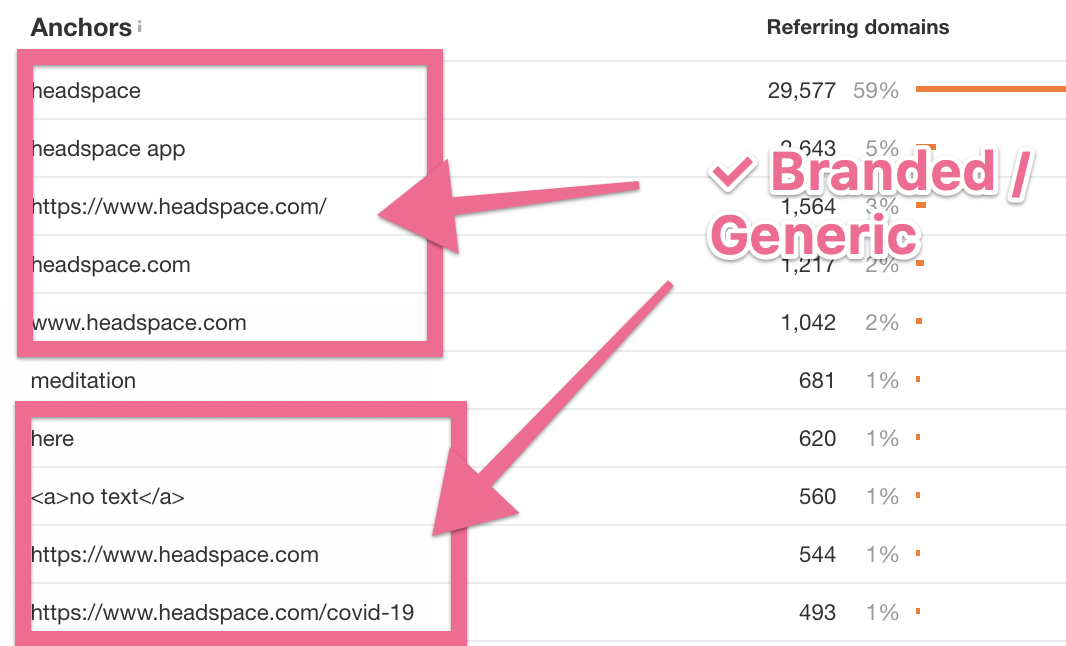
Versus:
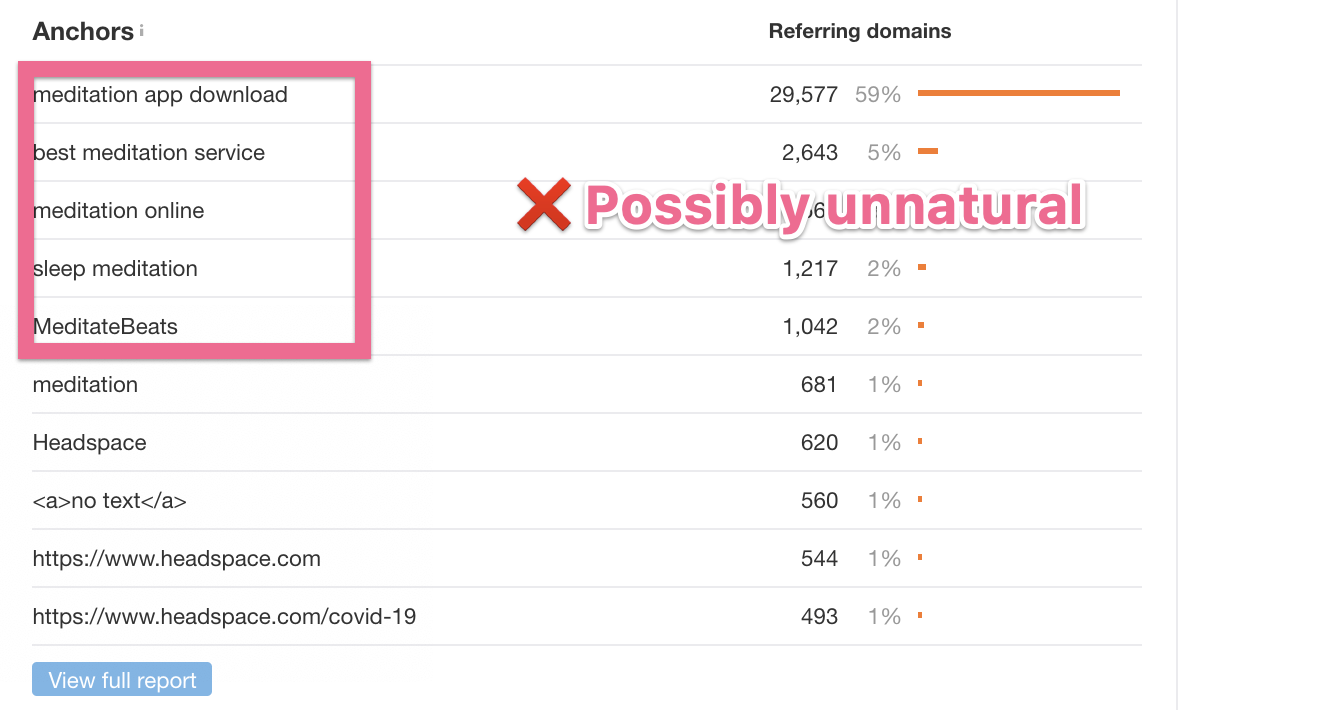
- Add any findings to your comments on the spreadsheet.
-
Export their link profile
- On the sidebar, click ‘Backlinks’. On the filters, select ‘One link per domain’:

- Export your data by clicking ‘Export’. This will export your competitor’s backlinks to CSV.

- Make a copy of the Competitor Backlink Strategy Template by clicking “Export as Google Doc”.
- Then head over to the “Competitor: [Competitor #1 Name Here]” tab. Replace the competitor’s name.

- On your copy of “Competitor Backlink Strategy Template” make sure your cursor is selecting Cell A1:
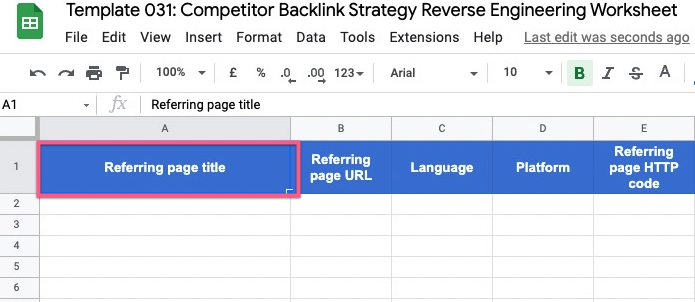
- Click ‘File’ → ‘Import’

- Select ‘Replace data at selected cell’ → ‘Import data’
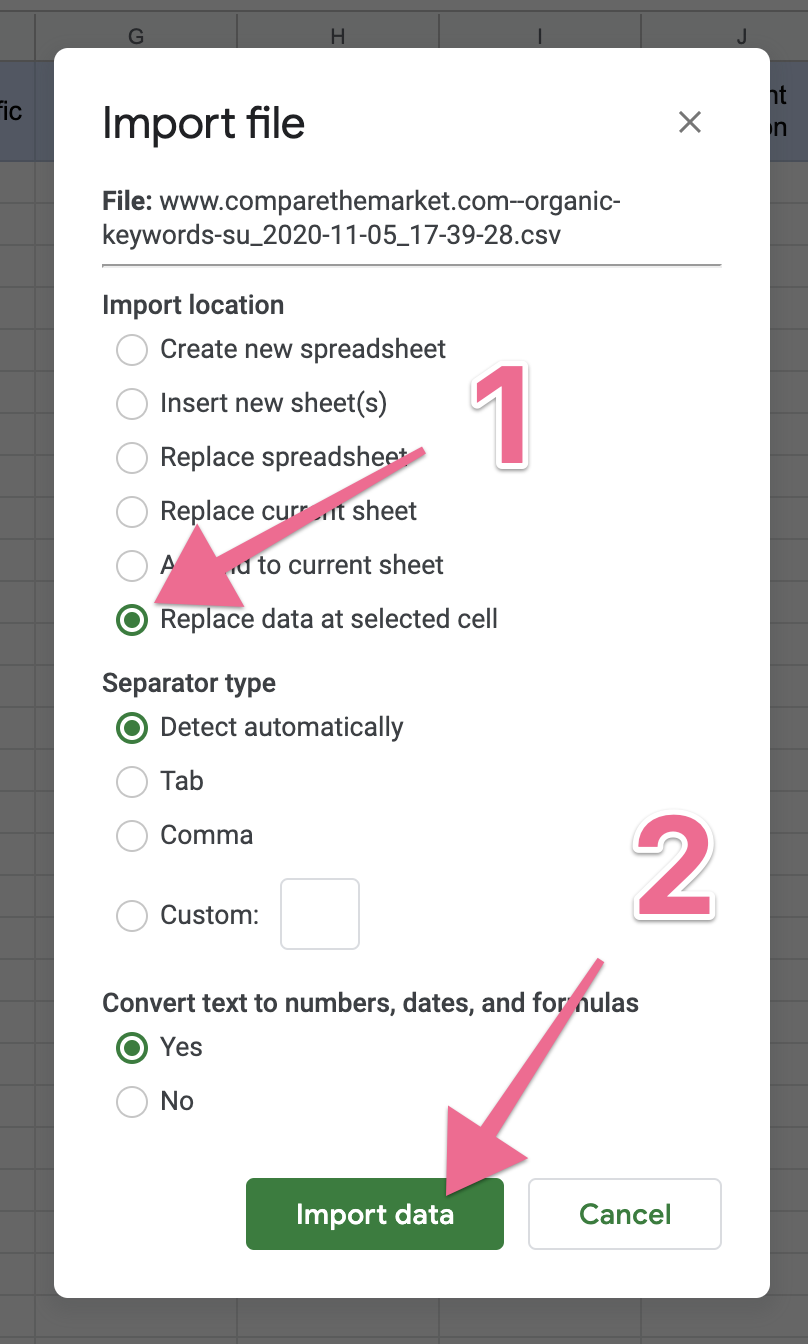
- Your competitor’s backlink profile will be imported. (Do not change or replace the headers, all the columns should align just perfectly, there’s no need to edit them)

-
- Go through each link and for each fill out:
- Link type: If you had to classify this link how would you classify it?
- Go through each link and for each fill out:
- Example: Directory, Forum, Comment, Article, Review, Testimonial, Partnership, App Store, Social, Affiliate, Podcast, etc.
-
-
- Spam: Is this link spammy?
-
- Example: Gambling, Adult, Pharma, belonging to pages with dozens of links, weird-looking content, a lot of irrelevant topics in the same domain/page, poor content.
-
-
- Attainable: Would you be able to get this link with your current resources?
-
- Example: If the link is a business directory, you can simply list your business there as well.

-
- Action to take: Will you want to take some action now knowing how your competitor acquired this link?
- Example: Competitor launched a COVID Health Care program that got him a ton of backlinks, your action to acquire these as well might be to also launch a similar program and reach out to those pages letting them know.
Frequently Asked Questions
Q: How often should I analyze my competitor’s backlink strategy?
A: It’s recommended to revisit your competitor’s backlink profile periodically, ideally every 3 months. This allows you to stay updated on their latest link-building efforts and identify new opportunities as they arise.
Q: What if my competitor has an enormous backlink profile – is it even worth trying to compete?
A: Don’t be discouraged! While a larger website might have a more extensive backlink profile, quality trumps quantity. By focusing on acquiring high-quality, relevant backlinks, you can compete effectively with even the most established players in your niche.
Q: I found some spammy backlinks in my competitor’s profile. Should I try to replicate this tactic?
A: Absolutely not! Search engines penalize websites with spammy backlinks. Focus on building high-quality, natural links from reputable sources.
By following this guide and consistently analyzing your competitor’s backlink strategy, you’ll be well on your way to unlocking SEO dominance!





